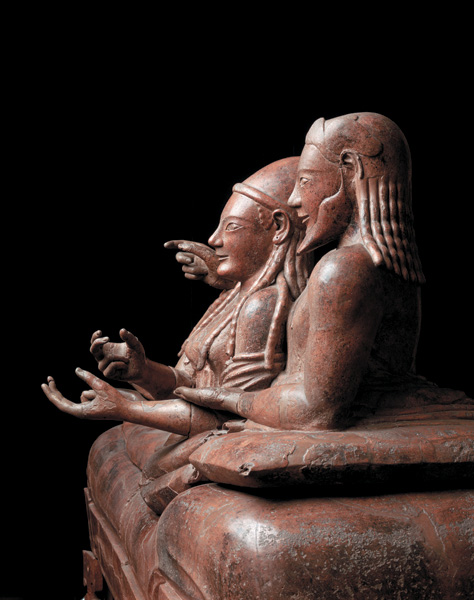Image Details

Araldo de Luca/Corbis
Such mirrors belonged to women like the aristocratic lady lovingly embraced by her husband on the sarcophagus. Dating between 530 and 520 B.C.E., the sarcophagus comes from the coastal city of Cerveteri. The novelist D.H. Lawrence beautifully described the power and energy of carvings like this one, celebrating the “vigorous, strong-bodied liveliness” in Etruscan sculpture and painting. “You cannot think of art,” he observed, “only of life itself.”
